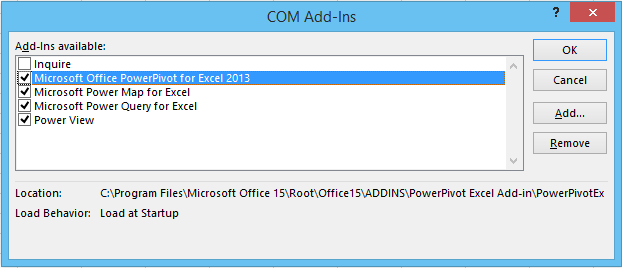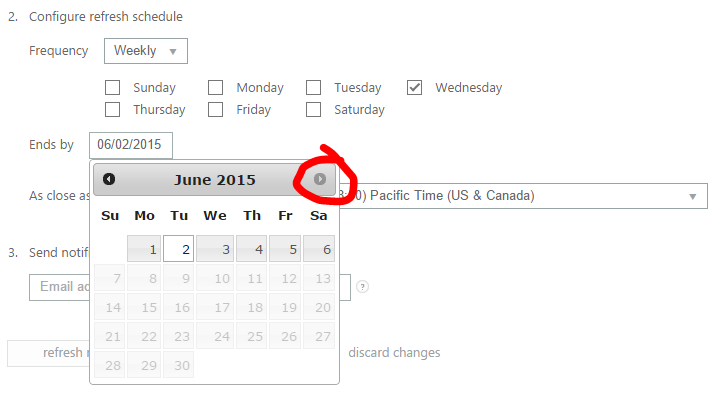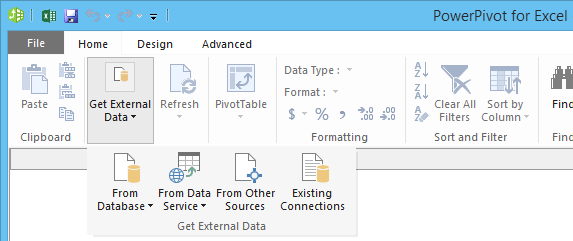This is thought to be a technical introduction to Power BI limitations & considerations which hopefully will allow you to avoid most common implementation pitfalls. Please take into consideration that Power BI is in a fast-paced development at the moment and that many features might change shortly.
Contents
Required Services
The current version of Power BI (2015-03-08) is available in two subscription levels. Either as an add-on to an existing E3/E4 Office 365 subscription or as a stand alone subscription which includes Office 365 as well.
Worth noticing is that Microsoft recently changed the pricing plan to either a free subscription level or 10$/user – https://www.powerbi.com/dashboards/pricing
Difference between Office 365 and SharePoint online?
You may wonder what the difference is between Power BI and Office 365/SharePoint online (Office 365 includes a SharePoint Online subscriptions plus additional features). At first it might not look as that much difference except the more visual and interactive Power BI site however are there are a few important differences:
| Feature | Office 365/SharePoint Online | Power BI |
| Access on-premise data | No | Yes |
| Max Excel Services workbook size (If file is larger user may still download the file and use it in the desktop version of Excel) |
10mb | 250mb (250 for Excel file content and 250mb for PowerPivot Data Model) |
| Scheduled Data Refresh | No | Yes |
| Power BI Q&A (Ask questions with “natural language” and get answers on the fly. Works but is still somewhat limited in many business cases and also requires well named and structured data) |
No | Yes |
| Access through windows store app (works on windows 8 based tablets and PC’s) | No | Yes |
More on differences between Power BI and Office 365/SharePoint online:
https://technet.microsoft.com/en-us/library/dn198235.aspx
Required Software
- Office 2010 Professional
- Office 2013 Professional
- Office 365 Pro Plus
- Includes additional features such as adding synonyms to your PowerPivot data model for discovery in Power BI Q&A
You will also need to ensure that you have the following add-ins installed and enabled in Excel to be able to use all features of Power BI:
- PowerPivot (required by PowerView and used as data & analytics engine withing Excel)
- PowerView (required to build highly interactive and visual reports/dashboards)
- PowerQuery (required for import of certain data sources, see next section)
- PowerMap (only for desktop use in Excel at the moment)
To view current enabled add-ins in Excel click file -> options -> add-ins -> choose manage: com add-ins -> Go…
Image may be NSFW.
Clik here to view.
For Office 2010 you will need to download and install all plugins above from Microsoft web site.
As default only PowerPivot, PowerView are installed with Excel 2013 but are NOT enabled. If you have Office 2013 or Office 365 Pro Plus PowerMap might also be installed but also needs to be enabled.
To install PowerQuery for Office 2013 go to the following link:
http://www.microsoft.com/en-us/download/details.aspx?id=39379
Power BI Data Management Gateway
To source on-premise data to the cloud a Data Management Gateway (DMG) is required. This is an intermediate software that runs on a server inside your corporate network that sources data from internal resources to the Power BI cloud.
The DMG will copy your on premise data to the cloud. The data is always stored within your Excel documents. When using PowerPivot models there is a “hidden” tabular engine in the cloud that will use the data from the uploaded and enabled Excel files.
Image may be NSFW.
Clik here to view.
You can read more about how to install the data management gateway and configure data sources here:
Important things to consider when installing the data management gateway
- Installation account and service account that runs the data management gateway service requires full administrative access to the server
- Windows firewall must be enabled for installation and uninstallation. Yes this is stupid but this is the way it is. (DMG version 1.2 and 1.4)
- Power BI Data Management Gateway TCP ports:
Outgoing TCP ports: 9350-9354 (Falls back to port 443/80 on failiure)
OData feeds require incoming ports 8050 or 8051 to be open by default
Although the installation and configuration might be straight forward many enterprise organisations may have security rules/process that affects the requirements above.
Supported data sources & scheduled data refresh
In Power BI you have the ability to schedule data sources for automatic refresh on a daily or weekly basis. At the time of writing scheduled data refresh is supported only for the following data sources:
| Data Source | Location | Auto-Refresh | Data Management Gateway Required |
| SQL Azure Database | Azure | Yes | No |
| Azure VM running SQL Server | Azure | Yes | Yes/No[1] |
| SQL Server (2005 and later) | On-Premises | Yes | Yes |
| Oracle (10g and later) | On-Premises | Yes | Yes |
| OData feed[2] | Web/On-Premises/Azure | Yes | No |
| Power Query[3] | On-Premises/Azure | Yes | Yes |
[1] Azure VM may be configured with access to SQL by using a public IP and adding an exception in firewall/network configuration. However when configured as a virtual network with a private IP address data management gateway is required. For a production environment use data management gateway with a secure connection.
[2] Note that no gateway is required for OData feed. However if you connect to an OData feed through PowerQuery a data management gateway is required. Hence if you like to access an OData feed on the internet or on your Office 365 site do NOT use PowerQuery.
[3] All data sources in PowerQuery must be hosted on the same data management gateway.
To make things even more confusing there are three places in Excel to import data:
- Data Tab
Image may be NSFW.
Clik here to view.![power bi import data sources data tab]()
- Within PowerPivot
Image may be NSFW.
Clik here to view.![power bi import data sources powerpivot]()
- PowerQuery tab
Image may be NSFW.
Clik here to view.![power bi import data sources power query tab]()
As long as you stick to the supported data sources you should not have any problem to use any of the three different methods. Power BI will use the connection string that you find under data tab -> connections.
Note: Keep in mind that once you have chosen a data source there is no support to change to another data source type without rebuilding the report and data models. I have also had issues with this when column name changes in the source not are propagated into PowerPivot. Also not that when you change a column name in PowerPivot it is removed from all PowerView reports where it is used.
Note: Some features which might be working locally on your computer in Excel is not guaranteed to work on Power BI in the cloud. For example SQL statements for sources in Power Query is not supported for most data sources. Also be careful by using data types that are not supported for example hour-to-minute and other time related data types in Teradata.
Before going ahead. Carefully plan which data sources you intend to use and DO READ the information in the following links.
Supported data sources for scheduled data refresh:
Power Query pre-requisites:
Scheduled data refresh max time span
In the current version of Power BI you are only able to schedule data refresh 3 months into the future. Hence you will manually need to update reports 3 months after schedule which is rather inconvenient. Note that the little forward button is grayed out in date selector of the image below which is a screenshot from data refresh page in Power BI. There is also no way to trick the date selector by using JavaScript or inject any other value into the date text-box. (It will fail to save the schedule)
Image may be NSFW.
Clik here to view.
Platform support
In the current state Power BI features are 100% supported by devices running Windows 8 or later with silverlight installed however it is accessible from any device with an HTML5 compatible browser. When running in HTML5 there are still some minor features in PowerView that not are available yet. Also the current app is only available in windows store for windows 8 based tablets e.g. Surface and others.
Future & opportunities – Power BI preview
Microsoft recently released the preview version of Power BI which will add a number of interesting features which among others are:
- SSAS Connector
You will no longer be limited to copy local data to the cloud but be able to query an on-premise SSAS server directly through the SSAS Connector which works similar as the DMG but live. - App for IOS and Android
- Power BI designer
New application to create reports and dashboards without Excel - New chart components (speed meters etc…)
- Interactive dashboards linking to underlying reports
Checkout more on:
https://www.powerbi.com/dashboards
The post Power BI limitations & considerations appeared first on Jonas Widriksson.


